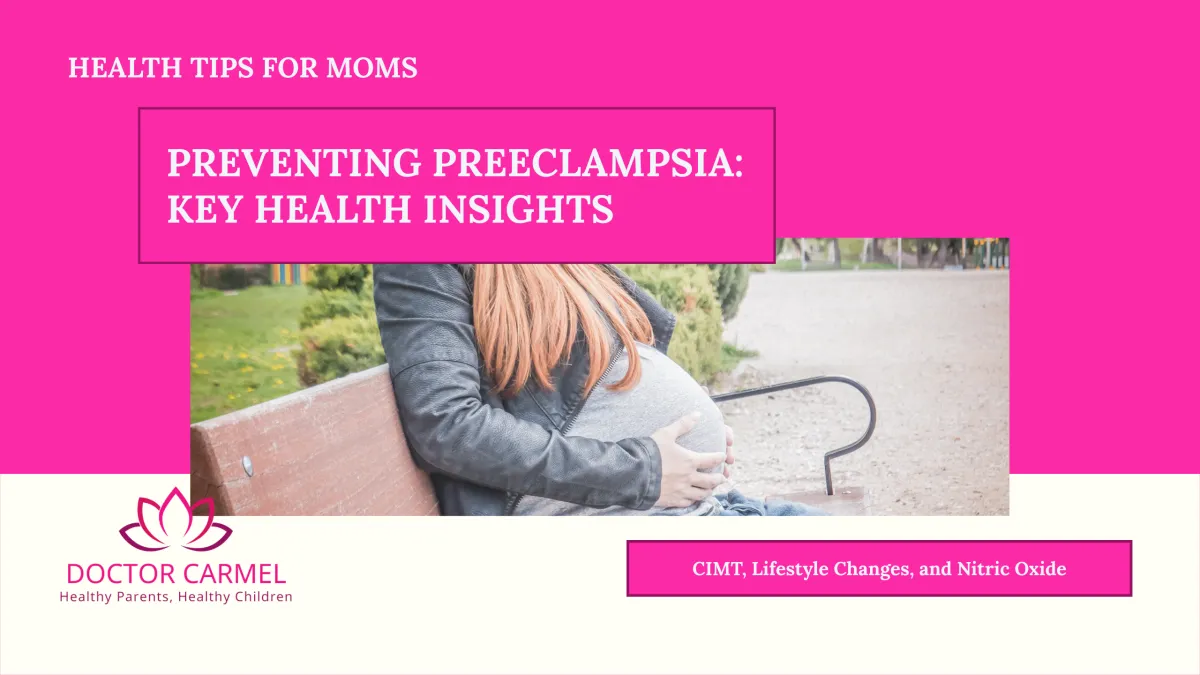
Preventing Preeclampsia: The Role of CIMT, Lifestyle Interventions, and Nitric Oxide in the Preconception Period
Preventing Preeclampsia: The Role of CIMT, Lifestyle Interventions, and Nitric Oxide in the Preconception Period
Preeclampsia is one of the most serious complications of pregnancy, affecting 5–8% of pregnancies worldwide. Characterized by high blood pressure and signs of organ damage—usually to the liver and kidneys—preeclampsia can endanger both mother and baby. While much attention is given to managing preeclampsia during pregnancy, emerging research shows that the preconception period is a critical window for reducing risk.
One of the most promising strategies for early risk identification and prevention involves Carotid Intima-Media Thickness (CIMT) screening, targeted lifestyle changes, and support for nitric oxide (NO) production, a key player in vascular health.
What Is CIMT and Why Does It Matter?
Carotid Intima-Media Thickness (CIMT) is a non-invasive ultrasound test that measures the thickness of the inner two layers of the carotid artery. Increased CIMT is a marker of subclinical atherosclerosis and is strongly correlated with future cardiovascular disease.
Why does this matter for women planning pregnancy?
Pregnancy is a cardiovascular stress test, and women with early signs of vascular dysfunction may be more prone to complications like preeclampsia. Several studies have shown that women who develop preeclampsia often have higher CIMT measurements even before pregnancy—suggesting that vascular changes predate the clinical signs of the condition.
By identifying these subtle vascular changes before conception, we have an opportunity to intervene early—before pregnancy begins.
Lifestyle Interventions in the Preconception Period
The preconception window is a unique opportunity to optimize a woman’s health, not only to improve fertility and pregnancy outcomes, but to reduce long-term health risks.
Key lifestyle strategies that may reduce CIMT and improve vascular function include:
1. Anti-inflammatory, nutrient-dense diet
Emphasize omega-3 fatty acids, colorful vegetables, lean proteins, and whole grains
Limit processed foods, added sugars, and trans fats
Consider a Mediterranean-style diet, which is linked to improved endothelial function
2. Regular physical activity
Aerobic exercise improves vascular elasticity, lowers blood pressure, and supports nitric oxide production
Aim for at least 150 minutes per week of moderate-intensity activity
3. Stress reduction
Chronic stress contributes to endothelial dysfunction and inflammation
Mind-body practices like yoga, breathwork, and meditation support vascular and hormonal balance
4. Sleep hygiene
Sleep deprivation is associated with increased blood pressure and systemic inflammation
Prioritizing 7–9 hours of restorative sleep supports hormonal and vascular regulation
The Nitric Oxide Connection
Nitric oxide (NO) is a critical molecule for vascular health. It helps blood vessels relax, improves circulation, and reduces inflammation. Low nitric oxide levels are associated with endothelial dysfunction, which is a precursor to both cardiovascular disease and preeclampsia.
Supporting Nitric Oxide in Preconception:
Dietary nitrates: Found in beets, leafy greens (especially arugula, spinach), and celery
Citrulline and arginine: Amino acids found in watermelon, nuts, and seeds that help synthesize nitric oxide
Avoiding mouthwashes that disrupt oral bacteria, which play a role in nitrate-to-nitrite conversion
Sunlight exposure: UV rays can stimulate NO release from the skin
Exercise: Boosts endogenous nitric oxide production
Optimizing nitric oxide levels before conception not only enhances vascular function but may reduce the risk of gestational hypertension and preeclampsia. Ask your provider to screen your nitric oxide levels with a simple saliva test.
Integrating CIMT Screening into Your Preconception Care
Consider a CIMT screening if you have a personal or family history of hypertension, preeclampsia, or cardiovascular disease. With this test you can:
Identify early vascular dysfunction and take a proactive approach
Tailor lifestyle and nutritional interventions
Monitor progress over time
Final Thoughts
Preeclampsia is not just a pregnancy problem—it’s often the result of underlying vascular issues that begin long before conception. With tools like CIMT screening, targeted lifestyle changes, and attention to nitric oxide status, we can shift from reactive care to true prevention.
By investing in vascular health during the preconception period, we not only reduce the risk of preeclampsia but also support healthier pregnancies, healthier babies, and healthier mothers for life.
